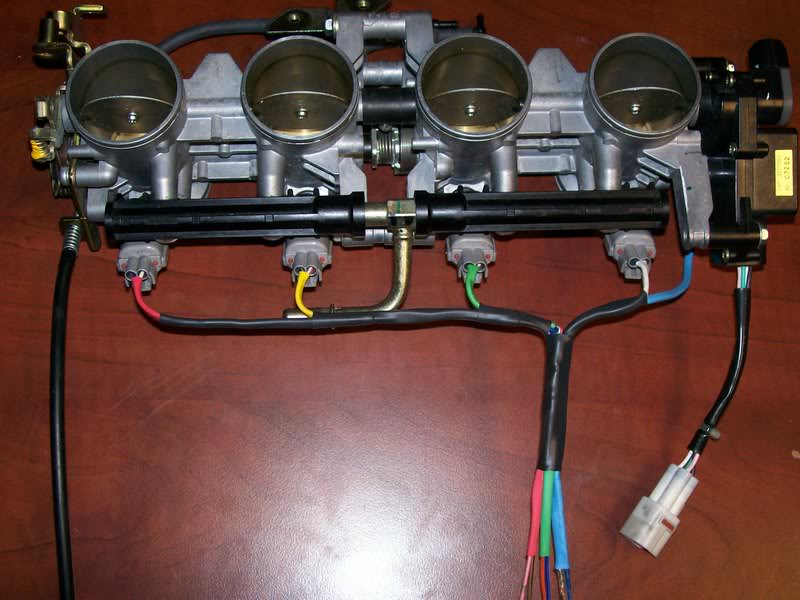Even though I’m still pretty much in recovery from this cold thing, I went to work today. When I got in, I still felt good enough to work on intakes that never end. Except they did, they are finished. I filled in the gap on the flat sides with brazing rod then ground on one till it was too hot to comfortably hold, set it on the anvil to cool and ground on another. Cycling through them all in this manner, I got them flat within my desired specs then polished with emery cloth and a coat of paint on the surface that will be visible when they are installed. I still need gasket material and since my flange is quite a bit thinner than stock, I’ll end up needing shorter bolts than the stock 20mm long ones. Might was well make them stainless steel while I’m at it. ![]()
The EMachineShop software let me print out the wheel to scale. I cut it out and made sure it would fit. I also verified, very non-scientifically, that the existing sensors are indeed variable reluctance sensors, which greatly increases the chances that I should be able to use them with the EDIS module.
I think I may make at least one attempt to make a 36-1 trigger wheel before I order one. The signal is primarily used for clocking, firing a spark once every 17 or 18 pulses, accounting for the missing tooth, so I think that so long as the teeth are reasonably well spaced, the performance will not suffer. I’m more concerned with making it dynamically balanced for the 9000+ RPM redline.
What I have in mind is cutting a 3.2″ disk, rounded up in the drill press. Then glue the printout to the surface to use as a drilling and cutting guide, drilling the base of the teeth and using a jewelers saw and files to profile the them. Can’t hurt, right?
Otherwise, I don’t have an official checklist of things left to do, so I think I’d better start one…
Test fuel pump and regulator wet, note current draw.
Install fuel return in fuel tank.
Cut and install plate for mounting hardware.
Install the throttle body and fabricate mounting bracket.
Extend/replace throttle cable.
Weatherproof *or* repackage MegaSquirt.
Find suitable mounting locations for CLT and IAT sensor.
Devise suitable crankcase ventilation with airbox gone.
Find and acquire Ford coilpack and plug wires
Find and acquire a IAC solenoid. It could possibly operate the idle cam on the TB
O2 sensor (I’ve pretty much decided to forego it until I can get a wideband)
I’m sure there are plenty other bullet items and none of these include all the little stuff required for each item ![]()





